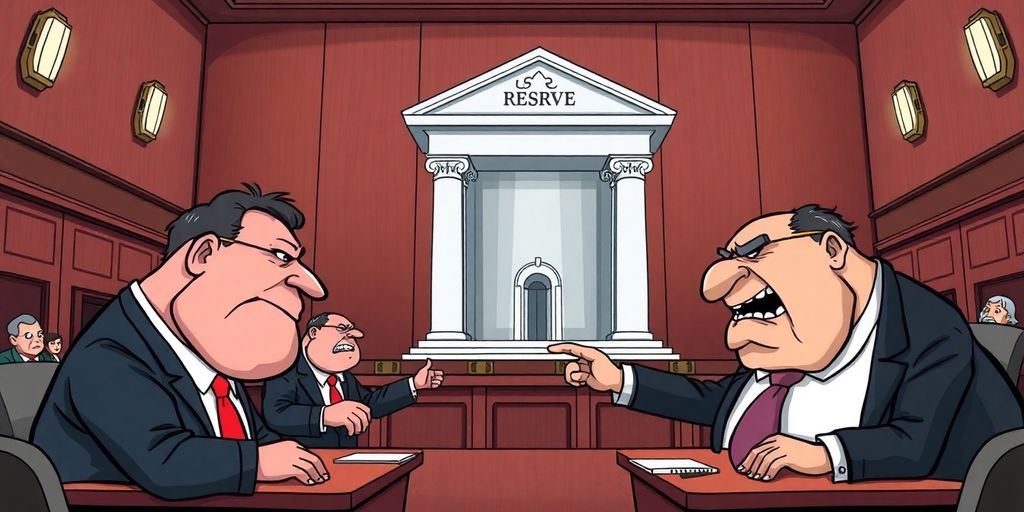Major banks and business groups have initiated a lawsuit against the U.S. Federal Reserve, claiming that the central bank’s annual stress tests violate legal standards. The lawsuit, filed in U.S. District Court in Columbus, Ohio, highlights concerns over the transparency and procedural integrity of the Fed’s testing methods.
Key Takeaways
- The lawsuit challenges the Federal Reserve’s stress test procedures and calls for greater transparency.
- Plaintiffs include the Bank Policy Institute, U.S. Chamber of Commerce, and American Bankers Association.
- Recent Supreme Court rulings have emboldened banks to contest regulatory powers.
- The Fed plans to implement changes for the 2025 exams but the lawsuit proceeds.
The lawsuit asserts that the Federal Reserve’s methodology for assessing how large banks would fare during hypothetical economic crises is not compliant with proper administrative procedures. The plaintiffs argue that the capital requirements imposed by the Fed, based on these stress tests, lack a solid legal foundation.
The groups involved in the lawsuit, including prominent banking and business organizations, are not seeking to abolish the stress testing program entirely. Instead, they advocate for a more transparent process that allows for public feedback on the models and scenarios used in the tests. They contend that the current lack of transparency undermines the effectiveness of the stress tests, which are crucial for evaluating the resilience of major financial institutions.
Background of the Lawsuit
- Filing Date: December 24, 2024
- Court: U.S. District Court, Columbus, Ohio
- Plaintiffs: Bank Policy Institute, U.S. Chamber of Commerce, American Bankers Association
The lawsuit comes in the wake of recent Supreme Court decisions that have limited the authority of regulatory agencies. In June, the Supreme Court overturned a long-standing precedent that had previously allowed federal agencies to interpret ambiguous laws with considerable deference. This shift has encouraged banks to challenge the regulatory framework more aggressively.
The Dodd-Frank Act, enacted after the 2008 financial crisis, mandates that the Federal Reserve conduct stress tests on banks to ensure they maintain adequate capital levels. However, the specific capital adequacy assessments and the resulting requirements are not explicitly mandated by law, leading to the current legal challenge.
Industry Reactions
Rob Nichols, president and CEO of the American Bankers Association, expressed concerns about the opaque nature of the stress tests, stating, “The opaque nature of these tests undermines their value for providing meaningful insights into bank resilience.” He emphasized the hope that the Federal Reserve would address these long-standing issues, while also noting that the lawsuit preserves the banks’ right to seek legal remedies if necessary.
The Federal Reserve has acknowledged the industry’s concerns and announced plans to pursue changes to the stress testing process ahead of the 2025 exams. However, the banks have chosen to move forward with their lawsuit, indicating a significant rift between the banking sector and its regulators.
Implications for the Banking Sector
The outcome of this lawsuit could have far-reaching implications for the banking industry and its regulatory environment. The stress tests play a critical role in determining how much capital banks must hold, which in turn affects their ability to pay dividends and conduct stock buybacks. A ruling in favor of the banks could lead to a more transparent and collaborative approach to regulatory assessments, while a ruling in favor of the Federal Reserve could reinforce the current regulatory framework.
As the legal proceedings unfold, the banking industry will be closely monitoring the developments, as they could reshape the landscape of financial regulation in the United States.





